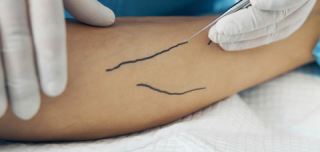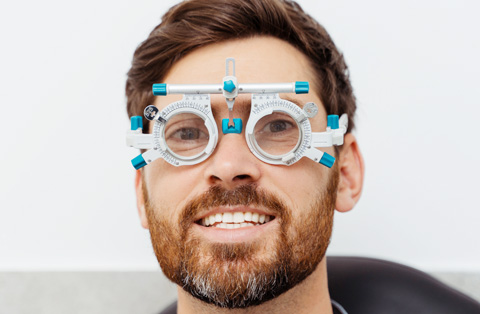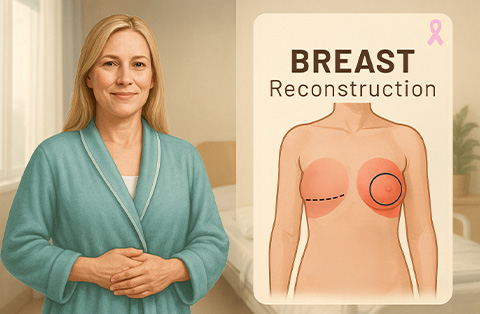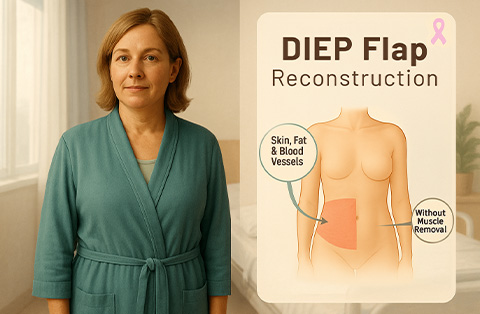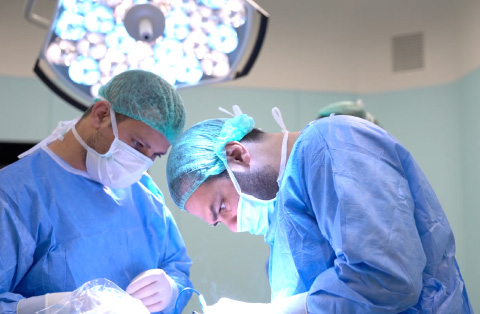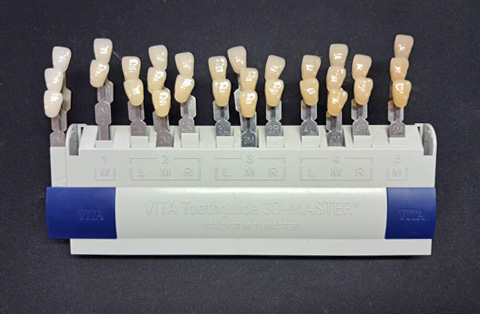Discover how to identify, treat, and prevent peripheral nerve injuries, restoring function, easing symptoms, and protecting long-term nerve health with proven medical approaches.
Peripheral nerve injuries occur when nerves outside the brain and spinal cord are damaged, disrupting communication between the nervous system and the rest of the body. This can cause pain, weakness, numbness, or loss of function.
These injuries matter because they affect millions worldwide and can severely limit mobility, independence, and quality of life. In some cases, without timely diagnosis and treatment, the damage may become permanent. Fortunately, many peripheral nerve injuries can be managed or repaired, and early intervention improves recovery outcomes.
In this article, we’ll explain what peripheral nerve injuries are, the symptoms and causes, how they’re classified, the diagnostic process, available treatments, and strategies to prevent or minimize them.
What Is a Peripheral Nerve Injury?
A peripheral nerve injury refers to damage that affects the nerves outside the brain and spinal cord. These nerves form the peripheral nervous system, which connects the central nervous system to the limbs, organs, and skin. Their role is to transmit signals for movement, sensation, and autonomic functions like sweating or blood pressure regulation.
When these peripheral nerves are injured, signal transmission is disrupted. This can lead to symptoms like numbness, weakness, pain, or loss of function in the affected area.
Peripheral nerve injuries can range from mild (temporary interruption) to severe (complete loss of nerve continuity). Early diagnosis and appropriate treatment are essential to prevent permanent damage or long-term disability.
How does a peripheral nerve differ from central components of the nervous system?
The nervous system is divided into two main parts: the central nervous system (CNS) and the peripheral nervous system (PNS).
The central nervous system includes the brain and spinal cord. It processes information and coordinates responses.
The peripheral nervous system consists of all the nerves outside the brain and spinal cord. This includes peripheral nerves that extend to the limbs, face, organs, and skin.
Peripheral nerves have three main types:
Sensory nerves carry information from the body to the CNS (e.g., pain, temperature).
Motor nerves send signals from the CNS to muscles for movement.
Autonomic nerves control involuntary functions like heart rate and digestion.
Unlike the CNS, peripheral nerves can regenerate to some extent after injury. However, the extent and speed of recovery depend on the severity and location of the damage.
When do nerve injuries qualify as peripheral nerve injuries?
A nerve injury qualifies as a peripheral nerve injury when it involves nerves located outside the brain and spinal cord. These injuries affect the peripheral nervous system, not the central nervous system.
Peripheral nerve injuries typically occur under the following conditions:
Trauma: from cuts, crush injuries, or stretching (e.g., car accidents, falls).
Compression: from prolonged pressure or repetitive motion (e.g., carpal tunnel syndrome).
Medical conditions: such as diabetes, infections, or autoimmune diseases affecting peripheral nerves.
Surgical complications: involving accidental damage to nearby nerves during procedures.
To qualify as a peripheral nerve injury, the site of damage must involve the peripheral nerves, not the spinal cord or brain tissue. Symptoms often include localized numbness, weakness, tingling, or loss of reflexes in the affected region.
What Symptoms Appear After a Peripheral Nerve Injury?
The symptoms of a peripheral nerve injury depend on the type of nerve affected—sensory, motor, or autonomic—and the severity of the injury. Symptoms may develop immediately after trauma or appear gradually in cases of compression or disease.
Which symptom types—sensory, motor, autonomic—should raise concern?
Sensory symptoms often include:
Numbness or reduced sensation
Tingling or “pins and needles”
Burning or sharp, shooting pain
Increased sensitivity to touch (allodynia)
Motor symptoms may present as:
Muscle weakness
Difficulty with coordination or movement
Muscle twitching or cramping
Paralysis in severe cases
Autonomic symptoms (less common but serious) can involve:
Abnormal sweating
Changes in skin color or temperature
Blood pressure fluctuations
Digestive or bladder issues
How do symptoms of peripheral nerve injury differ from peripheral neuropathy?
Peripheral nerve injury usually has a clear cause, such as trauma or surgery, and may affect a single nerve (mononeuropathy).
Peripheral neuropathy, by contrast, is often due to systemic conditions like diabetes and typically affects multiple nerves in a symmetrical pattern (polyneuropathy).
Injury symptoms tend to be localized and sudden, whereas neuropathy symptoms are often gradual and widespread. Proper diagnosis is essential to distinguish between the two and guide treatment.
What are the Causes of Peripheral Nerve Injury?
Peripheral nerve injuries occur when forces or conditions disrupt the structure or function of nerves outside the brain and spinal cord. Causes can be grouped into traumatic, compressive, disease-related, and iatrogenic (treatment-related) categories.
Which common causes (trauma, compression, disease, inflammation) damage peripheral nerves?
Trauma: Cuts, crush injuries, overstretching, or fractures can directly sever or damage peripheral nerves.
Compression: Prolonged or repetitive pressure on a nerve—such as in carpal tunnel syndrome or herniated disc—reduces blood flow and damages nerve fibers.
Disease: Conditions like diabetes, multiple sclerosis, infections, or autoimmune disorders can impair nerve health.
Inflammation: Nerve swelling from injury, infection, or immune reactions can restrict normal function.
Iatrogenic injury: Surgical procedures, injections, or medical devices may unintentionally injure nearby nerves.
What is the mechanism of injury in compressive versus traumatic scenarios?
Compressive injuries: Gradual pressure disrupts the nerve’s blood supply, leading to ischemia and demyelination (loss of protective myelin covering).
Traumatic injuries: A sudden force or sharp object can stretch, tear, or completely sever the nerve, disrupting both the myelin and the axon (nerve fiber core).
The severity of damage—whether affecting only the myelin or extending to the axon and connective tissue—determines the classification and recovery potential of the injury.
How Are Peripheral Nerve Injuries Classified?
Peripheral nerve injuries are classified based on the extent of structural damage to the nerve and the potential for recovery. Two widely used systems are the Seddon and Sunderland classifications.
What is the classification of peripheral nerve injuries according to the Seddon system?
The Seddon classification (1943) divides injuries into three main types:
Neuropraxia: The mildest form. Myelin is damaged, but the axon remains intact. Recovery is usually complete within weeks to months.
Axonotmesis: The axon is damaged, but the surrounding connective tissue remains intact. Regeneration is possible but slower and may be incomplete.
Neurotmesis: The most severe form. Both the axon and connective tissue are disrupted. Without surgical repair, recovery is unlikely.
How does the Sunderland classification of peripheral nerve expand on Seddon?
The Sunderland classification (1951) provides greater detail by breaking nerve injuries into five degrees:
First-degree: Equivalent to neuropraxia.
Second-degree: Equivalent to axonotmesis with intact endoneurium.
Third-degree: Damage to axon and endoneurium, but perineurium intact.
Fourth-degree: Damage to axon, endoneurium, and perineurium, with only epineurium intact.
Fifth-degree: Complete nerve transection, equivalent to neurotmesis.
This expanded classification helps predict prognosis and choose the most effective treatment approach, including whether nerve repair surgery is required.
How Is Peripheral Nerve Injury Diagnosed?
Accurate diagnosis of a peripheral nerve injury requires a combination of medical history, physical examination, and specialized tests. The goal is to determine the location, severity, and type of nerve damage to guide treatment.
What steps are involved in the diagnosis of peripheral nerve injury?
Medical history – reviewing symptoms, onset, injury events, and any underlying health conditions such as diabetes or autoimmune disorders.
Physical examination – assessing muscle strength, reflexes, and sensory responses to touch, temperature, and vibration.
Functional assessment – identifying specific movement or coordination deficits linked to affected nerves.
Which tests (EMG, nerve conduction, imaging, biopsy) are essential?
Electromyography (EMG): Measures the electrical activity of muscles to detect nerve signal disruption.
Nerve conduction studies (NCS): Evaluate how quickly and effectively nerves transmit signals.
Imaging: MRI or ultrasound can visualize nerve compression, swelling, or structural injury.
Nerve biopsy (rarely needed): Examines a small section of nerve tissue to identify disease-related changes.
Early and precise diagnosis improves the likelihood of full recovery, especially if nerve repair or other interventions are considered.
How is the Peripheral Nerve Injury Treatment?
Treatment for a peripheral nerve injury depends on the cause, severity, and classification of the damage. The main goals are to restore nerve function, relieve symptoms, and prevent long-term disability.
Which peripheral nerve injury treatment methods are available?
Conservative management: Includes rest, splinting, physical therapy, and anti-inflammatory medications for mild injuries such as neuropraxia.
Medications: Pain relievers, corticosteroids to reduce inflammation, and drugs for neuropathic pain such as gabapentin or pregabalin.
Lifestyle adjustments: Managing underlying conditions (e.g., diabetes), ergonomic changes, and avoiding activities that aggravate the injury.
When is nerve repair surgery indicated, and what does it involve?
Nerve repair or nerve reconstruction is considered when:
There is complete nerve transection (neurotmesis).
Severe compression or trauma does not improve with conservative care.
Functional loss significantly impacts daily activities.
Surgical options include:
Direct nerve repair by peripheral nerve surgery when ends can be reconnected without tension.
Nerve grafting using a donor nerve segment if a gap exists.
Nerve transfers redirecting a healthy nerve to restore function.
What non-surgical rehabilitation strategies support recovery?
Physical and occupational therapy to maintain muscle strength and prevent stiffness.
Electrical stimulation to encourage nerve regeneration.
Sensory re-education to help the brain adapt to new or restored nerve signals.
Recovery may take months to years, and early intervention increases the chances of regaining full function.
How Can Peripheral Nerve Injuries Be Prevented or Minimized?
While not all peripheral nerve injuries can be avoided (especially those caused by sudden trauma) many can be prevented or reduced in severity through proactive measures.
What workplace or lifestyle practices reduce risk of nerve injury?
Ergonomic adjustments: Use proper workstation setup, supportive seating, and correct posture to prevent compression injuries.
Protective equipment: Wear gloves, padding, or braces in high-risk jobs or sports.
Safe lifting techniques: Avoid sudden twisting or overextension that can stretch or compress nerves.
Regular breaks: Reduce repetitive strain by resting during prolonged manual tasks.
How does early management influence long-term outcomes?
Prompt medical attention: Addressing injuries immediately can prevent worsening and speed recovery.
Control of underlying conditions: Managing diabetes, thyroid disorders, or autoimmune diseases reduces the risk of chronic nerve damage.
Education and awareness: Knowing early symptoms such as numbness or tingling helps individuals seek treatment before permanent damage occurs.
Early recognition and intervention are key to minimizing the long-term impact of peripheral nerve injuries and maintaining optimal nerve health.
Frequently Asked Questions
What is the most common peripheral nerve injury?
The most common peripheral nerve injury is carpal tunnel syndrome, caused by compression of the median nerve at the wrist. It leads to numbness, tingling, and weakness in the hand. Repetitive wrist movements, prolonged computer use, or underlying conditions like diabetes often contribute to its development. Early treatment improves recovery.
Can peripheral nerves heal?
Yes, peripheral nerves can heal, but recovery depends on the type and severity of the injury. Mild damage, like neuropraxia, may heal within weeks. Severe injuries involving nerve fiber loss may take months or years, and sometimes require surgical repair. Early diagnosis and rehabilitation improve the chances of full recovery.
What is peripheral nerve neuropathy?
Peripheral neuropathy is a condition where peripheral nerves are damaged, disrupting communication between the brain, spinal cord, and the body. It can cause numbness, tingling, weakness, or pain, often in the hands and feet. Causes include diabetes, infections, injuries, or toxins. Treatment focuses on managing symptoms and addressing the underlying cause.
What is peripheral nerve palsy?
Peripheral nerve palsy occurs when damage to a peripheral nerve leads to partial or complete loss of muscle function in the area it controls. It may result from trauma, compression, or inflammation. Symptoms include weakness, paralysis, and sensory changes. Treatment depends on the cause and may involve therapy, medication, or surgery.
